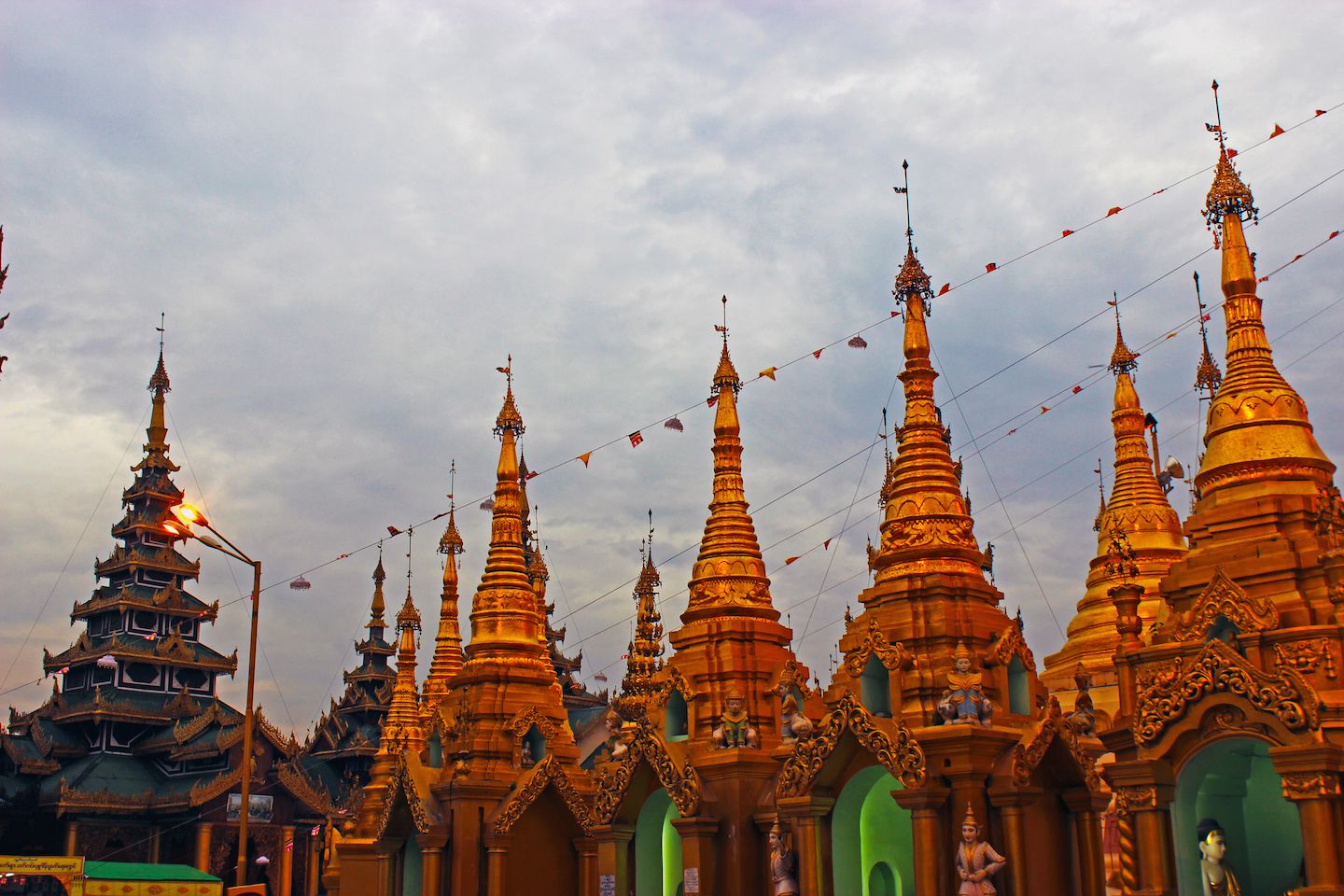The alpha and omega of our trip to Myanmar, Yangon is Myanmar’s most populous and bustling city. Even though it is no longer the capital of the country (succeeded by the elusive Naypyidaw in 2005), it is still the beating heart of Myanmar’s economy. Yangon is also a melting pot, where politics, religion and culture from the past and present meet.
Independence Monument
In the heart of Yangon, surrounded by the Maha Bandoola garden, was the Myanmar Independence Monument. It was raised to proudly celebrate Myanmar’s independence from the British in 1948. The obelisk stood at 46m high, a beacon amidst the flat garden surroundings.

North of the obelisk and the garden was Yangon’s City Hall, boasting Myanmar architecture featuring traditional tiered roofs. The City Hall has also been a stage for political demonstrations and bombings in 2000, 2008 and 2009.
To the east of the gardens, and in direct contrast to the Myanmar architecture of City Hall, was the Myanmar’s old Supreme Court building. The red coloured bricks and clock tower showed traces of the British colonial period. With the new Supreme Court now in Naypyidaw since 2006, this building has been struggling to find its purpose nowadays.

The Maha Bandoola Garden itself was often used as a meeting place for locals to enjoy their free time, such as playing with their kids. We spent some time just sitting in the gardens to escape from the chaotic streets and heat of Yangon. It’s always informative and nice to just observe locals. The Independence Monument / Maha Bandoola Garden was definitely one of the nicest parts of Yangon.

Shwedagon Pagoda
The most sacred place for Myanmar Buddhist devotees and the national symbol of Myanmar, the gilded Shwedagon Pagoda was high in the Yangon skyline and could be seen from almost anywhere in the city. We had passed by both Botahtaung Pagoda and Sule Pagoda earlier in the day, but figured that none of those could even begin to compare to Shwedagon.
From the Independence Monument, we took a cab to the southern stairway that led up the 40m hill to the main terrace. The approach to the entrance was quite memorable, as kids ran beside our cab screaming and trying to sell us plastic bags for our shoes – one of them even managed to throw a plastic bag at us through the car’s window. Unfortunately for the kids, we were prepared and brought our own bags; however, even then they tried to trick us saying that the bags needed to be transparent (ours was blue). While we admired their persistence and effort, we didn’t fall for it. With our shoes and socks in hand (should’ve worn flip flops!), we proceeded to climb up the long stairway packed with souvenir and flower shops.

At the top, after the ticketing office and security, the stairway opened to the marble-floored terrace. There it was! The 99m high Shwedagon Pagoda immediately drew our attention, despite there being a good number of worship halls all around. Sadly, the pagoda was covered with bamboo scaffolding for restoration, but we didn’t let that stop us from enjoying what it had to offer. Adorned with 27 tons of gold and over a thousand diamonds and gems (only worth two billion dollars or so), clearly Shwedagon was a huge deal.

An elevated square platform set Shwedagon higher than the surrounding lesser stupas – four bigger ones marked each cardinal direction, four medium ones each corner of the square platform and 60 smaller ones along the edges. The whole setting created a stunning scene of gilded spikes rising up into the sky. As we walked around Shwedagon, it was a striking sight from every angle.

According to legend, Shwedagon enshrines eight strands of hair from Gautama Buddha as well as relics from three previous Buddhas as well. The original pagoda is believed to be a work from the Mon people; construction dates back to the 6th to 10th century. The history of the pagoda is quite complex with several disputes, earthquake damage, as well as a 77-year British occupation on the grounds. We saw a few traces of the British cannon holes on the outer walls of the terrace and one of the bells from that period was still in exhibition.

A museum with photo exhibitions also had a few historical pictures, as well as close up images of the magnificent gem embellished orb that crowns Shwedagon that contained a majority of the jewels.

At twilight, the platform around Shwedagon was lit up with burning crimson flames as many locals kneeled to pay respect to the Enlightened One. We stood around and observed the whole ritual with curiosity and admiration.

After dusk, many people left the area and we had a last private stroll around Shwedagon before saying goodbye to one of the most extravagant national symbols we have seen so far.

We initially planned to visit Yangon in two parts, at the beginning and end of our stay in Myanmar. However, our second time in Yangon was prematurely terminated the morning we arrived from Bagan as we suddenly changed plans. However, we felt like we got a good grasp of the attractions and life in the city.

For more pictures from Yangon, please visit the gallery!
